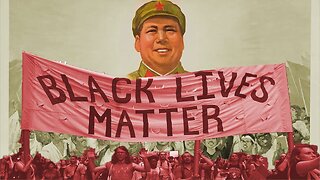What You Need to Know About Leadership!
Historically, almost all leaders have been autocratic… meaning self-power… “a system of government in which absolute power over a state is concentrated in the hands of one person.” This is the most ancient and common form of leadership known throughout history. Beginning at the dawn of humanity and continuing today, its influence still governs the majority of citizens and organizations on earth. One of the least desirable traits of “human nature” is the primal yearning by many to control, to command, and to dominate others.
Certain individuals have always arisen to assume positions of leadership among others and the overwhelming majority have been autocratic.
Again, this is type of leadership is demonstrated by a “command and control” philosophy that seeks to achieve only the leader’s personal goals.
Those at the top of the pyramid believe themselves to be superior, and the most talented. They build an institution that rewards their supporters and the compliant… while punishing those who resist the autocrat. In history, governments and military institutions have gravitated toward this type of “top-down” authoritarian leadership. This philosophical approach has typically viewed followers simply as individuals to be restrained, manipulated and often “disposable” in order to achieve the leader’s purposes.
The reward offered to followers is continued survival, and possible advancement within the hierarchy “if” absolute loyalty is demonstrated.
With this historical background… it is no surprise that an autocratic leadership approach was naturally followed during the birth of the Industrial Revolution beginning around the year 1760. The changes brought by the Industrial Revolution of the eighteenth century overturned not only traditional economies, but also whole societies.
These economic changes caused far-reaching social changes, including the mass movement of people to cities, and new ways of working. The Industrial Revolution was the first step in the modern economic growth and development we still experience today.
If you were an entrepreneur, opening a new factory during the Industrial Revolution what kinds of leadership would you see modeled for you in society? You would see the British government. It was autocratic and hierarchal. You would see the British military. It too was autocratic and hierarchal.
You would see the Church of England. It too was autocratic and hierarchal. Finally, education and family structure were also autocratic and hierarchal.
There were a small number of business reformers like Robert Owen but they were few and far between. So, it should be no surprise that the standard business model was… and has continued to be… autocratic and hierarchal. Other changes in society seemed to justify this autocratic approach.
As the Industrial Revolution began, workers living in the cities and arriving from rural farms were often uneducated and unskilled for this new kind of production labor. Work conditions were crude and the daily work hours demanded of them were oppressive. Unlike the farm, strict “start and stop” time requirements were demanded with no off-season.
However, work was scarce, and even meager wages could make the difference between survival or starvation in a nation where there was no social safety-net. The emerging class of powerful business leaders viewed these workers as basically ignorant, lazy, and undisciplined. Organizational leaders felt they must control and rigidly supervise all workers to maintain high levels of production. Business owners viewed themselves as paternalistic “father figures” who needed to dominate their “worker children.” Workers who did not completely yield or conform to the owner’s dictates were immediately terminated.
For over 200 years the general approach of leadership was hierarchal and authoritarian. This began to change in the latter part of the twentieth century. Democratic institutions brought about greater choices for workers. They began to have more control over their own lives.
Public education created a more educated workforce with the knowledge and skills to compete for better jobs and opportunities. Social safety-nets were created including offering unemployment benefits.
Workers along with our Western culture began to reject dictatorial hierarchal organizations and the treatment they received from them. In the later part of the 20th century another type of an ancient leadership philosophy began to be studied and promoted by consultants, and a new generation of business owners who wanted change. This philosophy is called servant-leadership, or stewardship and we will discuss it in greater detail next time.
-
 3:10
3:10
Bannons War Room
2 years agoWhat You Need To Know About ‘Operation Cold Snap’
16.9K80 -
 15:00
15:00
Joe Pags
2 years agoTHIS Is What You Need To Know About COVID-19
11.8K75 -
 2:00
2:00
WPTV
2 years agoHere's what you need to know about spring training
5 -
 56:56
56:56
The Squad
5 hours agoArsenal GOING CLEAR & Man City WILL FLOP🏆 Big Ange is a FRAUD😨Enzo Fernandez MUST BE SOLD!
2764 -
 13:42
13:42
Space Ice
17 hours agoCon Air Is So Good It'll Restore Your Faith In Mankind - Best Movie Ever - Nicolas Cage
2.32K15 -
 1:05:36
1:05:36
TheGetCanceledPodcast
13 hours agoTHE GCP Episode 5 | Diogo Snow Talks Growing Up In Brazil, Art Basel, Cyberpunk & More
17.4K7 -
 1:06
1:06
bostonbeaman
18 hours agoBE A MAN: Against the Grain 6 Pack
3.4K3 -
 14:43
14:43
JoBlo Horror Originals
22 hours agoHarry and the Hendersons: When Bigfoot Went Hollywood
4.5K1 -
 13:49
13:49
Good Kid Productions
1 day agoXi Van Fleet on Maoism coming to Fairfax, VA (convo)
3.89K3 -
 7:07
7:07
Hannah Barron
15 hours agoDilemma in the New Kitchen!
3.83K18